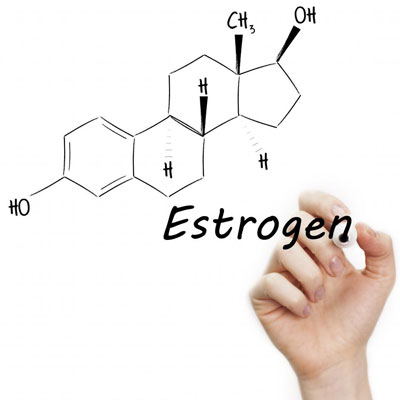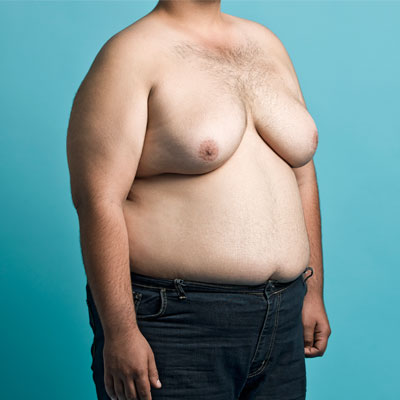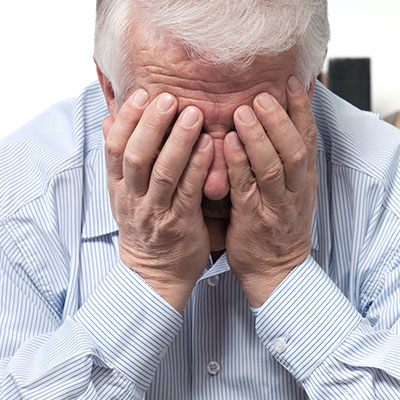Can Testosterone Convert to Estrogen
Contents
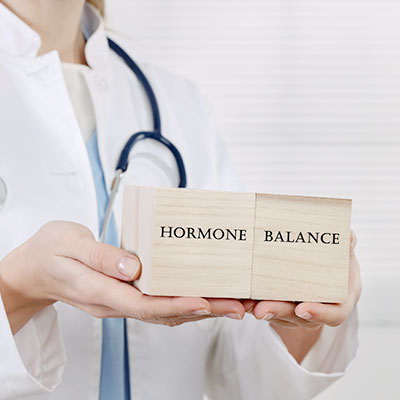
Everyone is familiar with the loss of estrogen women go through, which results in the many symptoms of menopause. Men also go through age-related hormone loss that results in a similar condition known as andropause. Most of the symptoms of andropause are related to low testosterone. However, recent studies have found that in aging males who suffer low testosterone, some of their remaining testosterone converts to estrogen. The research suggests that it could be this conversion of testosterone to estrogen that might be responsible for some of the symptoms of low testosterone in men – particularly those related to sexual wellness.
The human body is a very efficient machine. All of the hormone-driven biological processes work together in harmony with one another to try to achieve and maintain a state of homeostasis. Homeostasis comes from the Greek words for “same” and “steady.” It is simply defined as your body’s natural propensity to keep things steady, stable, and in balance for optimal health.
The conversion of testosterone to estrogen is part of your body’s way to maintain homeostasis. It does this through a process called “aromatization.” The reason the conversion of testosterone to estrogen is called aromatization is because the process is stimulated and regulated by an enzyme called aromatase. While aromatization mostly occurs in the male body — particularly as men reach middle-age– it also occurs naturally in the female body as well to try to keep all of her hormones in balance.
Does Testosterone Get Converted to Estrogen in Females?
Aromatase is the enzyme responsible for converting testosterone into estrogen. Aromatase is present in both the male and female bodies; therefore, testosterone does get converted to estrogen in females as well as males.
Women’s bodies make and need testosterone, albeit in smaller amounts than males. Relatively small quantities of testosterone are released into a woman’s bloodstream by the ovaries and adrenal glands.
Interestingly enough, whereas the conversion of testosterone to estrogen can be a negative consequence in men taking supplemental testosterone, it is this very effect that doctors count on when prescribing testosterone therapy for women to alleviate menopausal symptoms. In such women, testosterone therapy is used with the expectation that some of the excess testosterone will convert to estrogen through aromatization and thus help to treat typical symptoms of menopause such as night sweats, hot flashes, and mood swings.
Does Testosterone Get Converted to Estrogen in Males?
Testosterone does get converted to estrogen in males through the process of aromatization. The male body only produces about 7mg of testosterone per day. This small amount of testosterone also naturally comes along with a small amount of estrogen production to maintain the optimal testosterone to estrogen ratio.
Aromatization mostly occurs when a large fluctuation of testosterone production occurs, such as when men with low testosterone take testosterone injections. The sudden increase is seen as an excess by the human body, and aromatization will occur in an attempt to balance the new testosterone with a higher amount of estrogen. However, a certain amount of conversion of testosterone to estrogen occurs even in men who are not on testosterone therapy.
This occurs primarily as your body’s natural production of testosterone increases, such as when a boy goes through puberty. As boys become men and testosterone increases, a portion needs to be converted to estrogen to ensure sexual function and sperm production. In males, surprisingly enough, it is estrogen and not testosterone that plays a major role in sexual performance, sex drive, and fertility.
Testosterone Deficiency and Estrogen
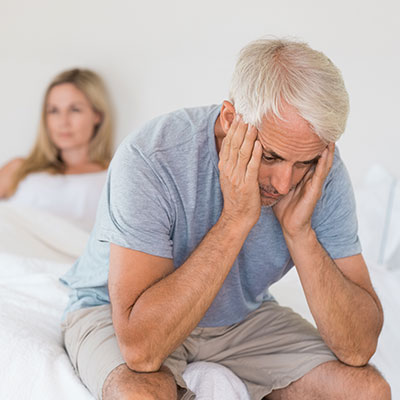
As men age, testosterone levels drop. Testosterone levels in men peak at about the age of 20 and then start a steady loss of about 1% to 2% every year. By the time most men are over the age of 45, they are likely to be experiencing age-related testosterone deficiency syndrome, more commonly called “low testosterone.”
Once you have a testosterone deficiency, your testosterone levels and estrogen levels will be completely imbalanced. That imbalance can be made worse by the conversion of testosterone to estrogen that occurs as men age. This can have the net effect of an increased level of estrogen in the body.
The testosterone/estrogen ratio in a man’s body needs to stay in balance to help with sex drive, the ability to have an erection, and the production of sperm. Current research suggests that the sexual health issues that accompany low testosterone, such as low libido and erectile dysfunction, may be related to aromatization and the resulting increased levels of estrogen as much as they are related to low testosterone.
Estrogen Conversion and Testosterone Replacement Therapy
As we have already explained, a portion of a male’s testosterone is converted into estrogen by the enzyme aromatase. When increasing the amount of testosterone in the body of men with low testosterone through testosterone replacement, a portion of that increased testosterone may trigger its conversion into estrogen. Although estrogen is essential to the well-functioning male anatomy, excessive estrogen levels have been found in some cases to counteract the benefits of testosterone replacement therapy.
Therefore, some men on testosterone replacement therapy may also be prescribed estrogen blockers. Your testosterone prescriber will decide if that is necessary for your low testosterone treatment.
Studies About the Conversion of Testosterone to Estrogen
There have been several studies that confirm the action of aromatase to convert testosterone to estrogen and the implications of same.
For example, a Trusted sourceAromatase cytochrome P450, the enzyme responsible for estrogen biosynthesisPubMedGo to sourcepaper in 1994 was an early study establishing the mechanism of action for conversion of testosterone to estrogen in men, stating, “Testosterone can also be converted to estrogen via aromatase, a member of the cytochrome P450 enzyme family, in target areas including neural tissue, adipose, liver, and bone. In men, estrogen from this reaction is important for maturation of sperm and libido maintenance.”
A much more recent study, Trusted sourceImpact of estrogens in males and androgens in femalesNCBIGo to sourcethis one in 2019, recognized the important roles that “male hormones” like testosterone play in females and “female” hormones like estrogen play in males. The study questioned even making that distinction stating, “In the past, estrogens such as estradiol were thought to be most important in the regulation of female biology, while androgens such as testosterone and dihydrotestosterone were believed to primarily modulate development and physiology in males.
However, the emergence of patients with deficiencies in androgen or estrogen hormone synthesis or actions, as well as the development of animal models that specifically target androgen- or estrogen-mediated signaling pathways, have revealed that estrogens and androgens regulate critical biological and pathological processes in both males and females. In fact, the concept of “male” and “female” hormones is an oversimplification of a complex developmental and biological network of steroid actions that directly impacts many organs in both genders.”
Now that you know more about testosterone, estrogen, and andropause, why not contact us today, and find out more about the many life-changing benefits of hormone replacement therapy?
FAQ
What Is the Relationship Between Low Testosterone and Estrogen?
A small amount of circulating testosterone is converted to estradiol, a form of estrogen. As men age, they often make less testosterone, and so they produce less estradiol as well. Thus, changes often attributed to testosterone deficiency might be partly or entirely due to the accompanying decline in estradiol.
What is Andropause?
Andropause is a collection of symptoms that are caused by age-related hormone decline in men. Unlike menopause in women, which occurs at a specific point in time, andropause in men occurs more slowly over time. Andropause is caused by the slow decrease in testosterone and other critical hormones that occurs as a man ages. The conversion of testosterone to estrogen in aging males also contributes to andropause.
How Is Andropause Treated?
Most of the treatment for andropause involves testosterone replacement. However, age-related decline of other critical hormones such as human growth hormone (HGH) can also contribute to andropause symptoms. Your andropause therapy is unique to your symptoms, needs, and lifestyle.
Your andropause treatment could involve testosterone replacement, HGH therapy, or both, along with other treatments. In any event, andropause therapy is designed to make you feel younger stronger, and improve your confidence, so you can continue to do all the things you enjoy most in life.
What Are the Symptoms of Andropause?
The signs and symptoms of andropause, also known as low testosterone or Low-T include:
- Decrease in libido or sex drive
- An overall feeling of reduced virility and vigor
- Changes in mood
- Erectile dysfunction
- Loss of stamina
- Loss of muscle tone
- Weight gain
- Loss of memory and other cognitive issues



